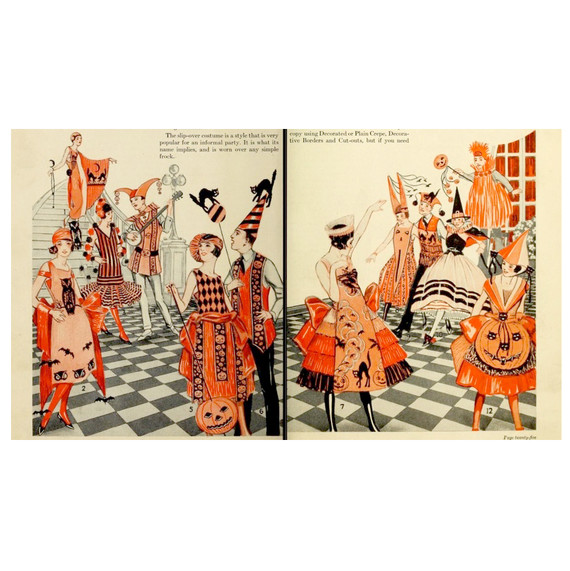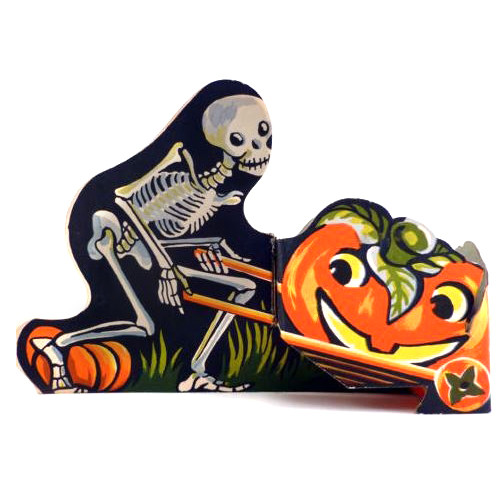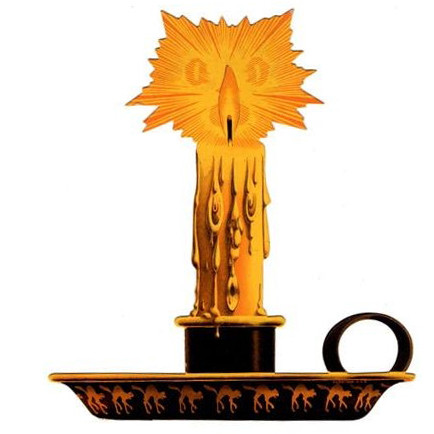这些复古万圣节装饰带来了闹鬼的历史
万圣节 – 它仍然让人联想到幽灵,黑猫,骷髅,骑扫帚的女巫,以及带有间隙齿咧嘴和眼睛眩目的杰克灯笼。这些卡通季节性漫画多年来没有太大变化。今天它们与10年,20年,50年甚至100年前一样具有标志性.

准备好一个怪异的故事?
万圣节在20世纪之交风靡一时。早在诡计或治疗成为统治传统之前,这个节日就是史诗派对。成年食尸鬼将聚集数小时的舞蹈,餐饮和主题游戏,如苹果摇摆,恶作剧,算命,以及用鬼故事互相欺骗。对于勇敢的主人来说,甚至偶尔也会出现这种情况.
这些有趣游戏的奖品包括锡制音响,纸帽和铃鼓等小商品。但是它们是为了一个晚上的派对而被扔进了垃圾桶里,所以它们通常不会被用到 – 这部分是因为像Mark Ledenbach这样的收藏家如此珍惜它们.
你可以说马克是万圣节收藏品的卫冕专家。他的个人收藏包括超过3,000种稀有和独一无二的物品。 “我更喜欢纸质装饰品,”他说,“模切,游戏,桌面装饰,地方牌,标签,1950年以前的邀请。”他出版的指南“Vintage Halloween Collectibles”是万圣节收藏家的首选参考.
下面,Mark Ledenbach展示了他自己收藏的一些最稀有的物品:
美国政党供应商开始在万圣节热潮中兑现,包括马萨诸塞州弗雷明汉的丹尼森制造公司;宾夕法尼亚州Shippensburg的Beistle公司;俄亥俄州辛辛那提的吉布森;马萨诸塞州伍斯特市的惠特尼。从20世纪初到60年代,这些品牌忙于生产.
但是一些最珍贵的作品来自海外。在第一次世界大战之后,鼓励德国工匠利用他们的制作专业知识制作出口到美国蓬勃发展市场的物品。莱登巴赫将1919年至1935年的时间标记为德国生产的“顶峰”.
墓碑庭院万圣节装饰品
什么是值得的?
莱登巴赫有一条规则:“图像更可怕,物品越老。”杰克灯笼是最常见的符号,其次是黑猫,然后是巫婆,骷髅,猫头鹰,乌鸦,蝙蝠和食尸鬼。魔鬼是迄今为止最稀有的图像之一,因此获得更高的价格.
“最引人注目的类型是德国糖果容器和灯笼,因为这些已被广泛复制,”莱登巴赫说。 “这种类型也充满了大量的幻想片,意味着没有真正复古的东西。”

确保物品的真实性。例如,如果您仔细地将复古纸质装饰与新纸张装饰进行比较,则新制作的物品要么过时,要么与复古物品的尺寸和颜色不同。这将让你知道一件纪念品是否是真正的“款待”。只要小心被假装伪装成真正的交易“欺骗”.

如果您有正品,价格将取决于材料,制造商和条件。记下即使是最小的损坏细节,例如锡制噪音制造者的凹痕或眼睛缺失的黑猫。游戏,糖果容器,灯笼,面具和装饰品的价值从20美元到数百美元不等 – 最稀有的物品价值数千美元。这对万圣节的待遇如何??
幽灵般的装饰秘密为终极鬼屋

27.04.2023 @ 08:03
As an AI language model, I do not have a personal opinion or cultural background to provide a comment on the topic. However, I can provide a translation of the text from Chinese to English:
Halloween – it still evokes images of ghosts, black cats, skeletons, witches riding broomsticks, and Jack-o-lanterns with gap-toothed grins and dazzling eyes. These seasonal cartoons have not changed much over the years and remain iconic today, just as they were 10, 20, 50, or even 100 years ago.
Ready for a spooky story? Halloween was a popular trend at the turn of the 20th century. Long before trick-or-treating or treating became the ruling tradition, this holiday was an epic party. Adult ghouls would gather for hours of dancing, dining, and themed games like apple bobbing, pranks, fortune-telling, and tricking each other with ghost stories. For brave hosts, even the occasional seance would occur.
Prizes for these fun games included tin noisemakers, paper hats, and tambourines, among other small items. But they were thrown away after one night of partying, so they were not often used – partly because collectors like Mark Ledenbach treasure them so much.
You could say Mark is the reigning expert on Halloween collectibles. His personal collection includes over 3,000 rare and unique items. “I prefer paper decorations,” he says, “die-cuts, games, tabletop decorations, place cards, labels, invitations from before 1950.” His guidebook “Vintage Halloween Collectibles” is the go-to reference for Halloween collectors.
Below, Mark Ledenbach showcases some of his rarest items from his own collection:
American party suppliers began cashing in on the Halloween craze, including the Denison Manufacturing Company in Framingham, Massachusetts; the Beistle Company in Shippensburg, Pennsylvania; Gibson in Cincinnati, Ohio; and Whitney in Worcester, Massachusetts. These brands were busy producing from the early 1900s to the 1960s.
But some of the most precious works come from overseas. After World War I, German craftsmen were encouraged to use their manufacturing expertise to produce items for the booming American market. Ledenbach marks the period from 1919 to 1935 as the “peak” of German-made items.
Whats worth it? Ledenbach has one